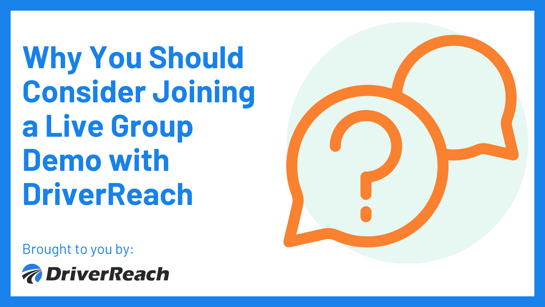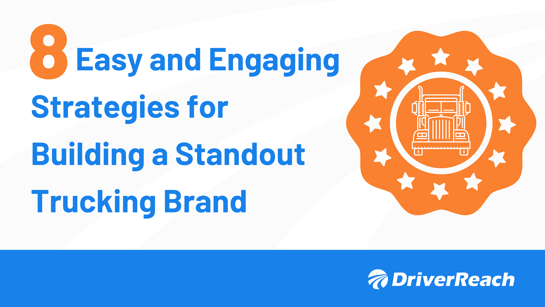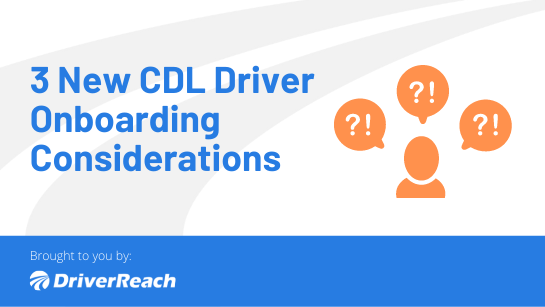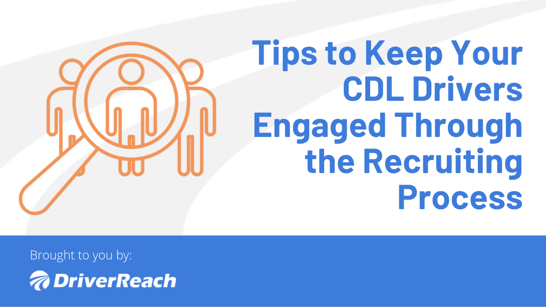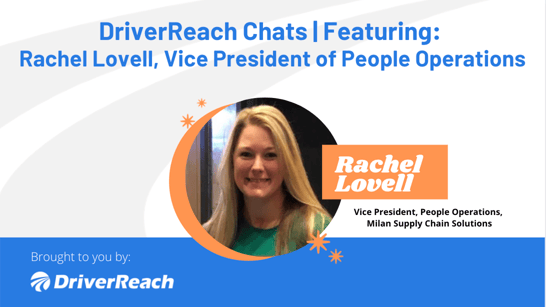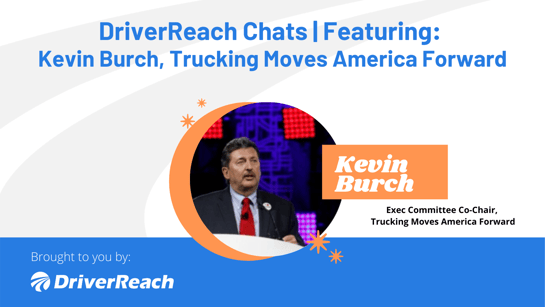Over the last few months, multiple changes have rocked the CDL trucking industry. Starting with the FMCSA Clearinghouse in January and culminating with the COVID-19 crisis in the early summer, there have been plenty of eye-opening events taking place. But how are these events actually impacting CDL drivers?
In a special DriverReach Chat, DriverReach CEO Jeremy Reymer spoke with professional truck driver Bob Stanton on life in the (literal) driver seat of one of America’s largest industries. Remember, you can watch Jeremy’s conversation with Bob on the DriverReach YouTube channel here!
Here are some highlights from Bob and Jeremy’s DriverReach Chat:
There were communication issues in trucking long before the COVID-19 crisis:
According to Bob there are three universal rules of trucking: things might not make sense, if you can navigate one miscommunication you can navigate anything, and Murphy’s Law is the real deal. Over the last few months, it has been the best and worst of times for CDL truck drivers. While the public has been responsive in the best way, these new concerns have only exacerbated the lingering issues in the industry.
Carriers and drivers are both dealing with different concerns:
Bob was recently pulled over for a random alcohol screen, which raised concerns about the sanitization of the breathalyzer itself. But this random screen came only days after FMCSA passed a ruling allowing carriers to postpone random testing. While the president of the testing facility was aware of this new guidance, the safety desk worker had not heard, nor had Bob. With so many recent FMCSA updates due to COVID-19, information needs to be able to quickly get passed along to those who need to know.
You’ve got to have a good customer service attitude:
Customers are also dealing with tons of unknowns. Drivers need to approach this new era knowing that yes, your temperature will be taken multiple times a week and yes, you’re going to receive questions about COVID-19. When things happen (like shippers not allowing drivers to use their restroom, something that actually happened to Bob), it’s easiest for drivers to deal with things at a higher level. It’s easier for shippers to find out that not having restrooms available for people doing business on their property is a zoning issue and an OSHA compliance issue. If shippers and carriers get these violations and don’t do anything about them, drivers simply won’t want to work with them. Carriers are finally figuring out that it is much harder to recruit and retain an experienced good driver than it is to find customers to pull freight for, and now carriers can use this as a differentiator.
On the recruiting side, it’s always good for drivers to know what they’re getting into:
Bob is also an outspoken advocate of driver empowerment on the recruiting side. He is known for ‘interviewing the interviewer’ because, as he says, if he’s interviewing for a new position then it’s a business decision for him. Before entering into a new partnership with a carrier, drivers should know:
- How mileage is calculated for mileage-based offers
- The trailer-to-tractor ration, which can help ballpark how busy a driver might be
- When benefits kick in, whether it’s on their start day or 90 days after start
Another important question to ask, especially now, is how carriers are tracking and/or dealing with drivers who have tested positive for COVID-19. Unfortunately, every company is different. Some carriers are just telling drivers who may have COVID symptoms to self-isolate in their cabs, but this isn’t always possible. Bob has found that it’s easiest for drivers to book it home if they start feeling symptoms (but only if there is no risk for family members). Another PSA – carry a thermometer in your truck and have a contingency plan in place if you are bringing pets along on drives.
And finally, don’t believe everything you see online!
One thing that has been revolutionary for CDL drivers is the smartphone: finally, people who are used to being on the road can have information and news at their fingertips. But this news isn’t always as straightforward as it seems. If drivers think they have COVID-19, follow the CDC guidelines, not what you see on social media. Drivers should first and foremost go to a hospital if they need to. But there are telehealth options, professional sites, and other resources that can help you confirm your symptoms or point you to a testing or treatment facility if needed. Simply put, an ounce of prevention is better than a pound of cure!
You can watch the entire DriverReach chat with Bob here, and while you’re there make sure you also Subscribe to the channel to be notified when new chats are posted!
Stay up to date on CDL trucking trends! Be sure to check out the DriverReach blog or follow us on LinkedIn for other relevant articles and head over to our webinars page for an up-to-date list of upcoming events and on-demand recordings.
Interested in seeing DriverReach’s modern Recruiting Management System in action? Request a demo!


